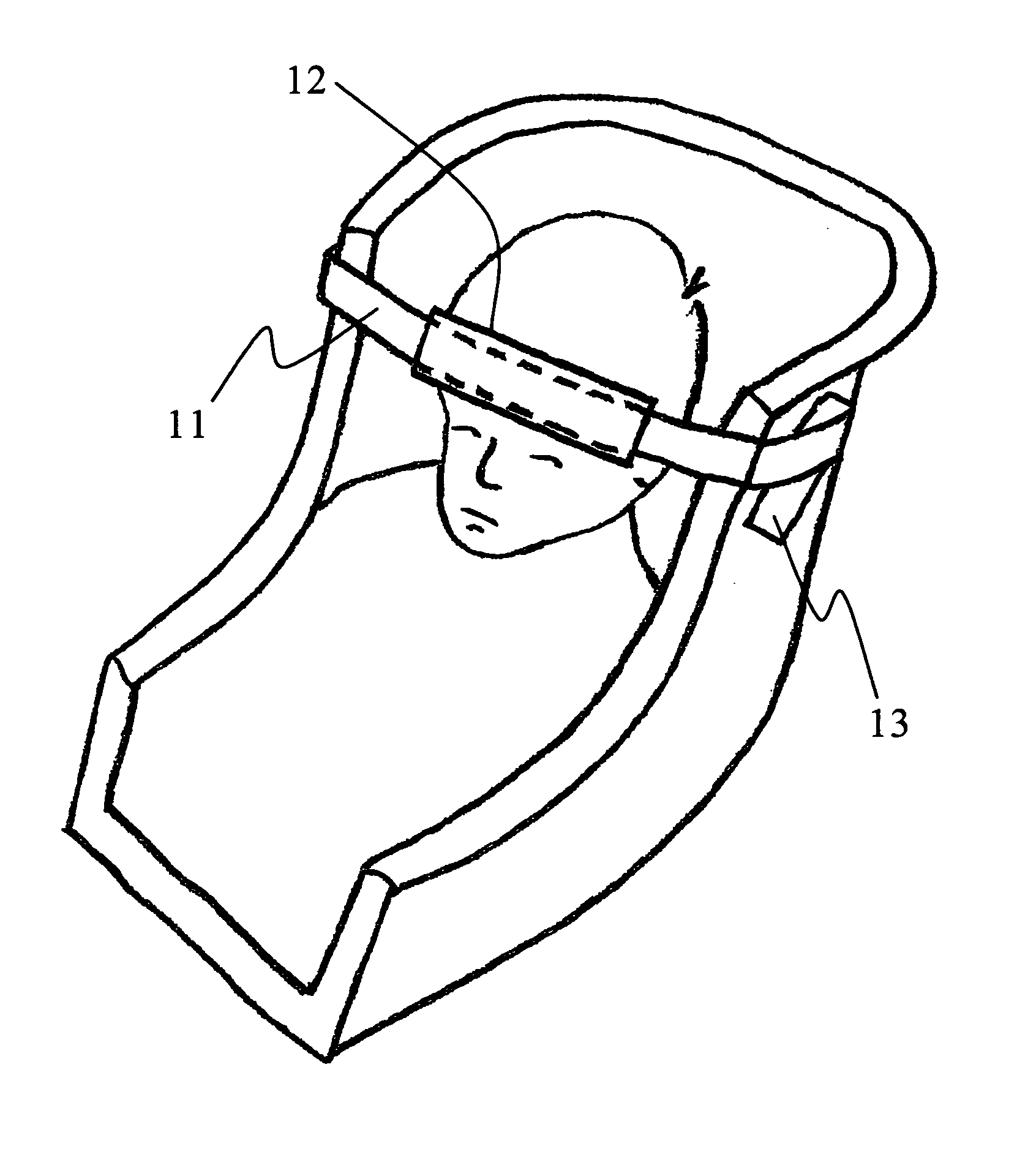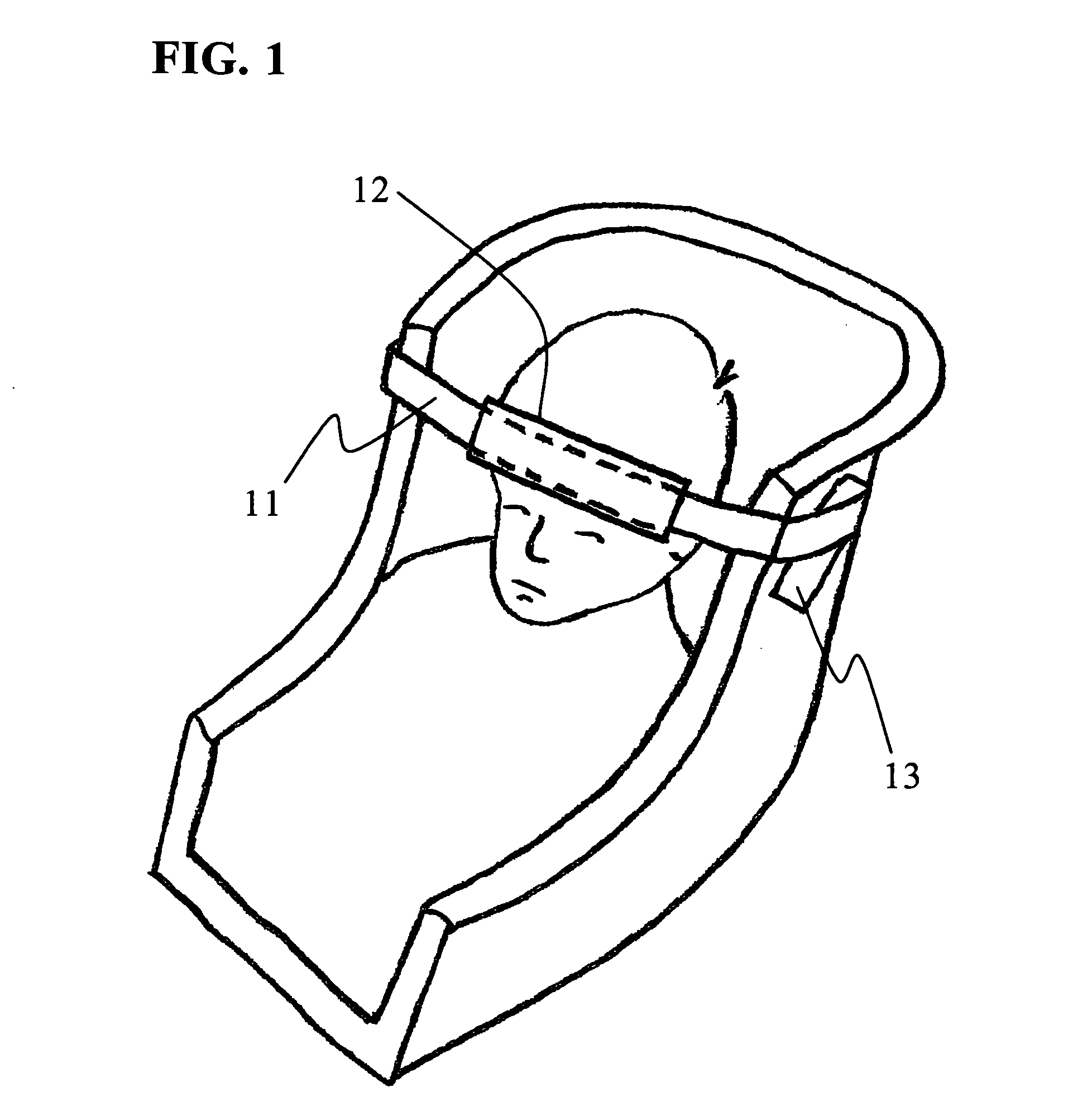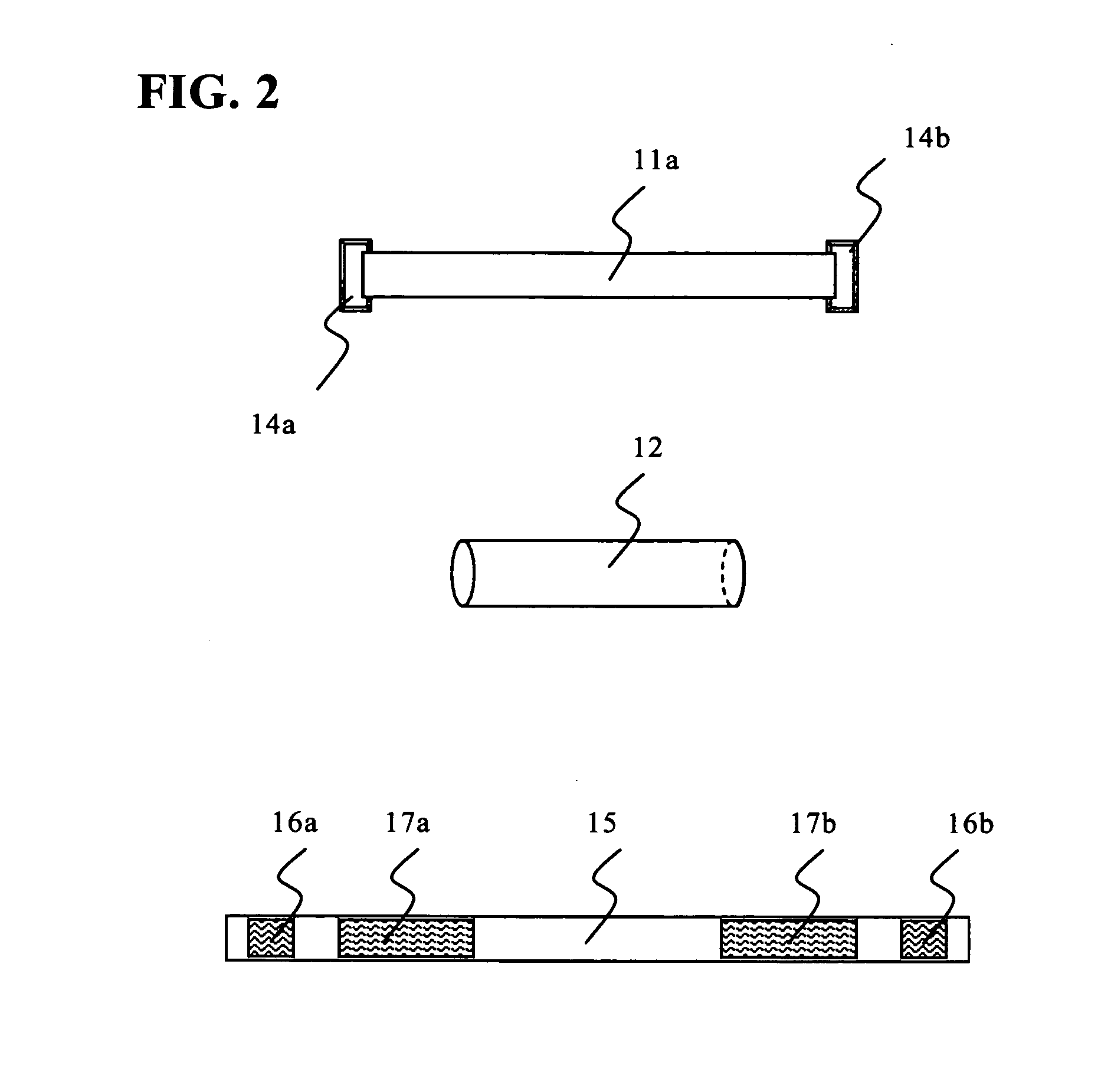Indeed, when babies are riding in a vehicle car seat, they typically spend a lot of hours sleeping.
During sleep, however, the muscles in the neck and back of the
human body that normally support the head do not function.
The result is that when babies are asleep in a car seat, their head will fall forward or “roll” to the left or right, placing strain on the baby's neck and spine and causing discomfort that diminishes the quality of sleep that the child enjoys.
While driving in and around city streets, the forces associated with
vehicle acceleration, braking, and sharp turns, respectively, further magnify the harmful effects on the neck and spine caused by the child's head not being supported.
Others require several parts, involve intricate installation, are incapable of being readily adjusted to accommodate for various size heads, and are bulky in terms of their size and weight.
Furthermore, the '571 patent does not comprise a child car seat head support having a soft cotton head pad that is tubular in design, wherein a support band is inserted through the head pad and is attached to the car seat by two hook and loop type
fastener strips, such that the support strap completely surrounds the child's head.
The '714 patent does not teach an apparatus that is used with a modern forward-facing child car seat.
Furthermore, the '714 patent does not comprise a child car seat head support having a soft cotton head pad that is tubular in design, wherein a support band is inserted through the head pad and is attached to the car seat by two hook and loop type
fastener strips, such that the support strap covers the child's
forehead.
The '885 patent does not disclose an apparatus that can be used with a modern forward-facing child car seat during vehicle operation.
Furthermore, the '885 patent does not comprise a child car seat head support having a soft cotton head pad that is tubular in design, wherein a support band is inserted through the head pad and is attached to the car seat by two hook and loop type
fastener strips.
The '861 patent does not disclose an apparatus that is used with a modern forward-facing child car seat during vehicle operation.
Furthermore, the '861 patent does not comprise a child car seat head support having a soft cotton head pad that is tubular in design, wherein a support band is inserted through the head pad and is attached to the car seat by two hook and loop type fastener strips.
The '151 patent does not disclose an apparatus that is used with a modern forward-facing child car seat during vehicle operation.
Furthermore, the '151 patent does not comprise a child car seat head support having a soft cotton head pad that is tubular in design, wherein a durable support band is inserted through the head pad and is attached to the car seat by two hook and loop type fastener strips.
The device disclosed by the '885 patent is bulky in size and is not easily adjusted to accommodate for various sized heads of children.
The
head restraint is not flexible and does not tightly secure the child's head, since the apparatus in the '885 patent is designed to be installed such that a gap exists between the child's head and the
support system.
In addition, the '031 patent does not allow for adjustments to accommodate various size heads because the band placed over the front of the car seat does not use a hook and loop type fastener to attach to the car seat, but instead uses snaps.
The '264 patent teaches a medical appliance and is not an apparatus that can be used with a modern forward-facing child car seat during vehicle operation.
Furthermore, the '264 patent does not comprise a child car seat head support having a soft cotton head pad that is tubular in design, wherein a support band is inserted through the head pad and is attached to the car seat by two hook and loop type fastener strips, such that the support strap completely surrounds the child's head.
The '393 patent teaches a medical appliance and is not an apparatus that can be used with a modem forward-facing child car seat during vehicle operation.
Furthermore, the '393 patent does not comprise a child car seat head support having a soft cotton head pad that is tubular in design, wherein a support band is inserted through the head pad and is attached to the car seat by two hook and loop type fastener strips, such that the cotton head pad rests on the child's
forehead, but is not adhered to same.
Such balloons may require manual inflation and are generally not reliable for long term use.
The '042 patent does not teach an apparatus that can be used with a modem forward-facing child car seat during vehicle operation.
Furthermore, the '393 patent does not comprise a child car seat head support having a soft cotton head pad that is tubular in design, wherein a support band is inserted through the head pad and is attached to the car seat by two hook and loop type fastener strips.
Furthermore, the '158 and '854 patents do not comprise a child car seat head support having a soft cotton head pad that is tubular in design, wherein a support band is inserted through the head pad and is attached to the car seat by two hook and loop type fastener strips.
Furthermore, the '959 patent does not comprise a child car seat head support having a soft cotton head pad that is tubular in design, wherein a support band is inserted through the head pad and is attached to the car seat by two hook and loop type fastener strips.
The '825 patent does not disclose a head support having an elastic support band which is inserted through a tubular head pad and is attached to the car seat by two hook and loop type fastener strips.
Furthermore, the '716 patent does not comprise a child car seat head support having a soft cotton head pad that is tubular in design, wherein a support band is inserted through the head pad and is attached to the car seat by two hook and loop type fastener strips.
The ’245 patent requires three separate straps, which increases the cost of the product, and make it more difficult to install than a device with a
single support strap.
 Login to View More
Login to View More  Login to View More
Login to View More 


